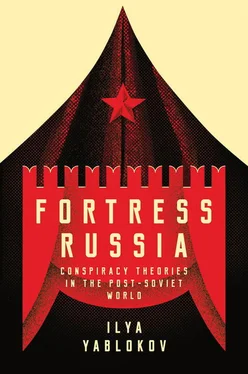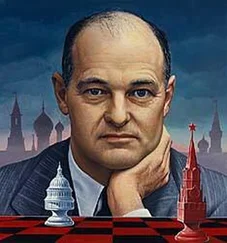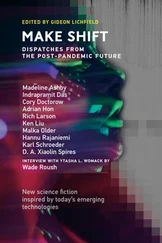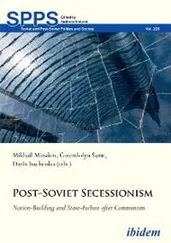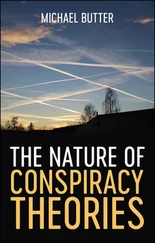Another important aspect of anti-American conspiratorial discourse is the perception that American politicians are fearful of Russia’s growing power (Gorianin, 2009). Veronika Krasheninnikova, Director General of the Institute for Foreign Policy Research and Initiatives, wrote (2007, p. 306) that the American neoconservatives’ hatred of Russia originated in Russia’s unique ability to challenge the United States’ liberal global messianism. This was particularly evident during the Cold War, when there was competition between the two different ideologies. Following the general narrative of Surkov’s speeches, Krasheninnikova claimed that the USA held a variety of perceptions of Russia. However, she concluded (p. 383), without providing any references, that: ‘As some historians have said, other countries have to be either America’s colonies or its enemies’. Hence despite claiming to provide a balanced analysis of American policies in relation to Russia, her arguments supported the idea of a US conspiracy against Russia.
One of the important trends in the development of anti-American conspiratorial narratives during the 2000s was their gradual absorption into official political discourse. In fact, the state leadership implicitly supported certain conspiratorial claims, thus legitimizing their existence in the public space. For example, in December 2006 the government’s daily newspaper, Rossiiskaia gazeta, published an interview with Boris Ratnikov, the former general of the Federal Guard Service, who seemed to think he could read the mind of the former US Secretary of State, Madeleine Albright:
In the thoughts of Madam Albright we discovered a pathological hatred of the Slavs. She was outraged by the fact that Russia possessed the biggest mineral reserves in the world. According to her, in future Russia’s resources should be administered not by one country, but by humankind, under the control of the US, of course. (Ptichkin, 2006)
This idea was further developed a year later during a presidential press conference, when Putin was asked by Aleksandr Sibert, a worker from Novosibirsk, about Albright’s thoughts on the redistribution of Siberian resources. Putin admitted that he did not know about this, but that he was aware that such ideas existed in the heads of ‘certain politicians’ (Putin, 2007a). This remark became a reference point for anti-Western propaganda during the parliamentary elections of 2007; it was then used to strengthen the image of a ‘conspiring America’ and its allies within Russia (Smolchenko, 2007). However, in 2014, when the reference to Albright’s statement was reiterated again by Putin, both Ratnikov and Sibert refused to accept that Albright had actually stated these words. In fact, Ratnikov stated that he never met the US Secretary of State (Krechetnikov, 2015).
This episode illustrates the process of the development and dissemination of anti-Western conspiracy theories in the public space, and the role played by top-ranking politicians in this process. Firstly, the claim about Albright appeared in an article in an official, state-funded newspaper as part of a far-reaching conspiracy theory. It subsequently appeared on several news websites (Noskov, 2007; Trukhachev, 2008), and this helped to spread the theory among various audiences which were not made up only of conspiracy theorists and their fans. Putin’s television interview was a major political event and led to further dissemination of the idea. In these press conferences, the questions addressed to the president are often chosen because they tackle important current issues and make it possible for the president to express the desired interpretation of these issues, or they bring up other issues which are important for the Kremlin (Kozlov et al., 2017). Accordingly, it is possible that the question about Albright’s views was selected by Putin’s political advisers for strategic reasons: to encourage alarmist views of the West’s threat to Russian national resources, and to personify the plotter, as had been done in other conspiracy hoaxes. Although Putin claimed to be unfamiliar with the statement which Albright never made (Krechetnikov, 2015), it is likely that he played a key role in legitimizing this allegation in the public sphere.
‘Nashi’: The Creation of Anti-Western National Elites
The activities of the youth movement Nashi ( Ours ) constitute one of the most significant examples of how anti-Western conspiracy theories have been used to establish greater social cohesion among young Russians and to use a particular version of nation-building discourse in support of the Kremlin’s policies. The movement was often presented by pro-Kremlin speakers as a career path for young people in Putin’s Russia but its real aim was to prevent possible street unrest during the forthcoming elections.
Pro-Kremlin political elites were shaken by the participation of youth groups in the revolutions in Ukraine and Georgia (Finkel and Brudny, 2012, p. 18). These groups had shown that they were effective at street action; they were a constituency that the Kremlin would ignore at its peril in the 2007–8 elections. In the post-Soviet period, neither pro-Kremlin political parties nor opposition organizations managed to create a well-functioning movement which could mobilize large groups of young people. The main impediment was perhaps the complete lack of any conceptual framework which could unite this highly disparate and fragmented social stratum. Accordingly, high on the Kremlin’s agenda was the need to create a political identity for young Russians who were supportive of the regime, and perhaps, in the long term, to turn this movement into a successful example of civil society (Hemment, 2012).
Nashi first appeared on the political scene in February 2005, defining themselves as a ‘Youth Democratic Anti-fascist Movement’ with the goal of ‘making Russia a global leader for the twenty-first century’ (Manifest, n.d.). However, the journalists who attended the movement’s first meetings described its main goal as resisting the threat of ‘the external control of the country’ (Kashin, 2005b). The very name of the movement, Nashi ( Ours ), was a linguistic symbol distinguishing ‘Us’ from ‘Them’. The community of young Russians united under its banner attacked opposition activists, criticized political elites, and accused international foundations of representing interests and values foreign to Russian society (Blomfield, 2006). Although scholars, not without reason, tend to see the movement as a form of civil activism (see Atwal, 2009), we will focus here on a single ideological aspect of Nashi ’s activities – nation-building.
The name Nashi was originally used by a controversial nationalist reporter and former Duma deputy, Aleksandr Nevzorov, for his own movement. This was established in November 1991 as a reaction to the failure of the August 1991 coup. Its members called for Yeltsin’s removal from power and for the restoration of the Soviet state. Nevzorov claimed in 1991 that: ‘Every proper citizen of Russia, deep in his soul, dreams about the GKChP , because in reality the country is occupied by the enemy’ (Zakharov, 2011). This conspiratorial narrative of foreign occupation, which became a commonplace in nationalist opposition ideology throughout the post-Soviet period, helped Nevzorov to mobilize supporters and become a parliamentary deputy. However, he later admitted that in the 2000s Surkov had personally asked him to ‘donate’ the name to his youth project (Levkovich, 2012). This is another demonstration of the fact that the conspiratorial rhetoric concerning the Soviet collapse, which possessed such strong potential for social mobilization in the 1990s, was, in the 2000s, relocated from the nationalist margins to mainstream political discourse and became a political tool for the development of social cohesion.
Читать дальше
Конец ознакомительного отрывка
Купить книгу
